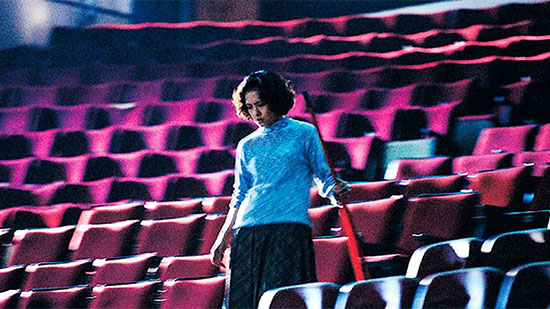Life is moving at a strange pace at the moment. At once on hold and furiously unsettled, days follow each other with a repetitive nothingness while we all wait for news no one knows how to break. Naturally – streaming is up, distraction is paramount, it’s a good time to enjoy movies.
For a brief moment of relief, to recalibrate those key moments in life where things did dramatically change, for better or for worse, we asked esteemed Quietus contributors old and new to share the film titles that changed their lives. Not the ones they hold dearest, or think are most impressive, but the ones that actively forced a tectonic shift of some sort.
Everyone disagrees on whether films can save the world – but in times of slowness and uncertainty, of overflowing lists and back-catalogues, there’s never been a better time to re-open the debate by sharing the load. – Ella Kemp, Film Editor
American Beauty (1999)
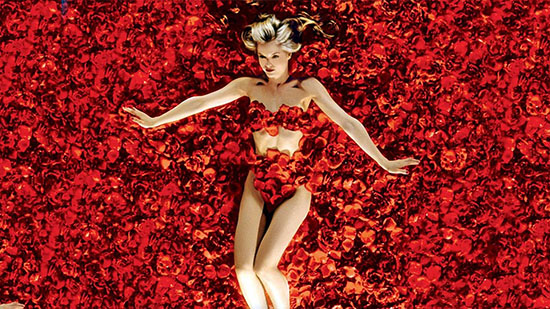
Presumably having a polar-opposite effect to what was intended, American Beauty led to a period of my late teens where I would obsessively film every social event I attended, big or small (how anyone else allowed this is still mysterious). The embarrassment that washed over me when I actually went to watch some of the footage years later led to hundreds of hours being purged in seconds—it’s unclear whether the cinematic community will ever recover from this archival loss. – Blaise Radley
The Assassin (2015)
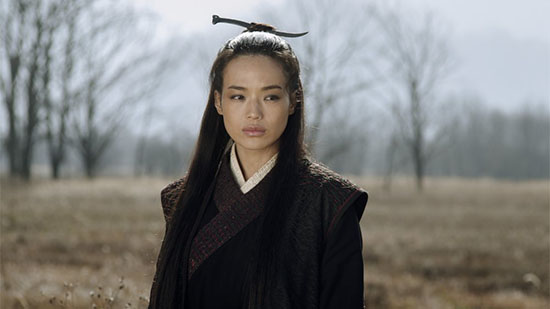
The Assassin, with its silent conversations, empty framing and intense stillness (that Asian cinema is so masterful at), was revolutionary for curing my Western affliction for Bigger! Better! Bolder! action all the time… – Daisy Leigh-Phippard
BlacKkKlansman (2018)
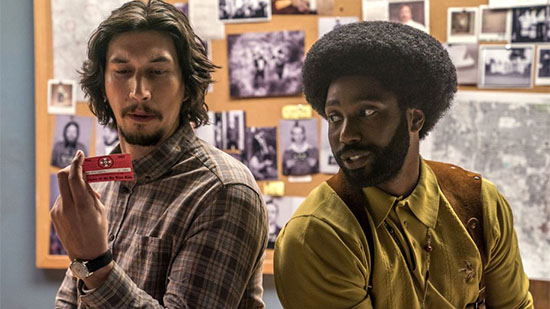
BlacKkKlansman taught me to remember the importance of influential black icons, who are the reason black people are able to live the way we currently do. It links to the way, in a sense, that history repeats itself: we aren’t as developed as we think we are when it comes to racial profiling. – Laviea Thomas
The Bride of Frankenstein (1935)
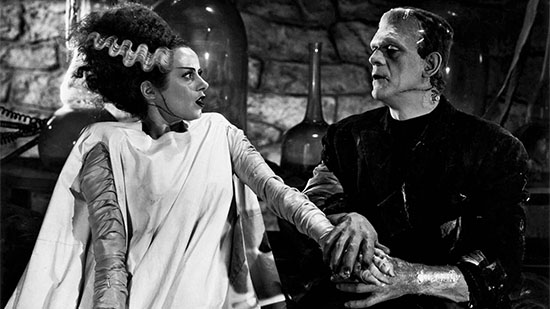
I admit, as far as primal influences go, The Bride of Frankenstein did not send me graverobbing, and gin probably remains the only weakness I don’t have. But seeing this film for the first time at 10 or so, and immediately realizing I loved it in the same way I loved Frankenstein and The Invisible Man, led me to notice the same name, James Whale, appeared on all three, after “directed by”. I began to make connections, see patterns, understand how a single sensibility could shape a film. All respect due Cahiers du Cinema, but I learned my auteur theory thanks to TV’s weekly Creature Features, and everything I’ve done in my so-called career has followed from that. – Stephen Whitty
Burning (2018)
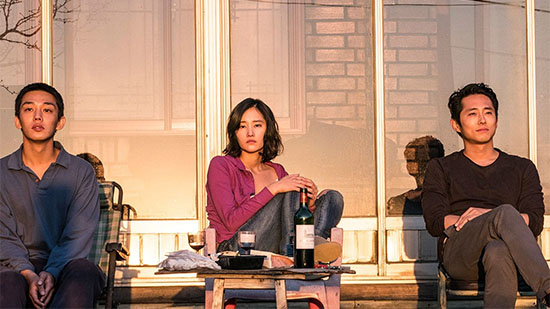
Lee Chang-dong’s Burning rid me of a nasty habit: reading William Faulkner. Two of its main characters declare admiration for the great literary modernist of the American Southern Gothic. Neither reflects well on me. Ben, the obscenely rich and oleaginous Gatsby figure, resorts to torching greenhouses because of his apathy and boredom towards a world which gives him everything and where work is impossible to distinguish from play. Full of new money swagger and faux emotional range, Ben is the arrogant foil for Jongsu, an earnest and gauche aspiring writer.
Ostensibly love rivals, both are drenched in an empty, confused and enraged toxicity but united by a single, interwoven suffocation: jealousy. That, and they both like the tiny scribe from Oxford, Mississippi. I used to think that studying and writing about Faulkner gave me crucial intellectual capital and cultural cache. Since seeing myself in this warped double of a mirror, I’ve not touched a drop. – Joseph Owen
Chopping Mall (1986)
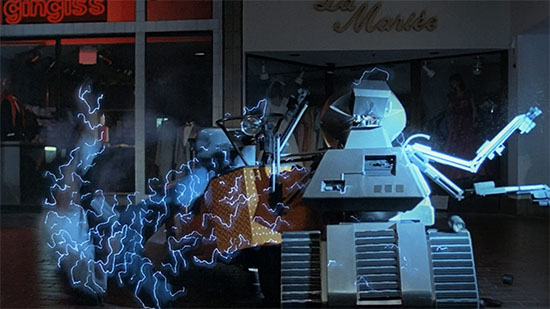
When I was a kid, my parents’ living-room walls were lined with VHS tapes. Many of which I was, at the time, far too young to see. I used to pore over the artwork of such unseemly classics as Evil Dead II, Gremlins and Hellraiser. But there was one whose playfully horrific imagery I spent more time examining than others. Most of the genre movies in my folks’ collection were otherwise embedded in popular culture; I knew RoboCop, Pinhead and the T-800 long before I saw them onscreen. But Chopping Mall’s exquisite cover gave me little more to latch on to than a robotic arm and a bag full of dismembered human body parts. What the fuck was this? A tantalising taste of the sordid genre fare that would become my bread and butter in years to come, that’s what. – Sean McGeady
The Comfort of Strangers (1990)
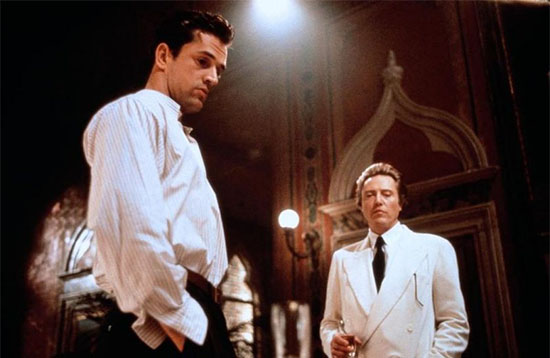
The importance of Paul Schrader’s The Comfort of Strangershas little to do with the movie itself, about which I can barely remember a thing 30 years after I saw it. But when I was an 18-year-old college student, the desire that I felt for Rupert Everett while watching it forced me to realise it that I couldn’t keep putting off acknowledging my gayness and figuring out how to live with it. I’d been attracted to men since I was 12, but that viewing sparked a new epiphany. Thanks, Rupert and Paul. – Steve Erickson
Dawn Of The Dead (1978)

Yes, the special effects are laughably crap by today’s standards and the zombies almost completely unthreatening, but place this film in context. I was about 10 years old, watching videos at someone else’s house while my parents socialised in the next room, oblivious. The two scenes where some zombies fight over someone’s severed arm, and the lead character zombifies in an elevator, made me numb with fear. The terrible emptiness of the shopping mall where the apocalypse played out resonated with me for years, and the anti-consumerist metaphor of the film still strikes me as genius. After the fear had gone, I found myself fascinated by horror films and how they’re filmed, and although I’m not a horror freak per se, I do react emotionally to the artistry behind the genre. I attribute this directly to accidentally seeing this silly film at an age when The Wombles would have been more appropriate. – Joel McIver
Demon Seed (1977)
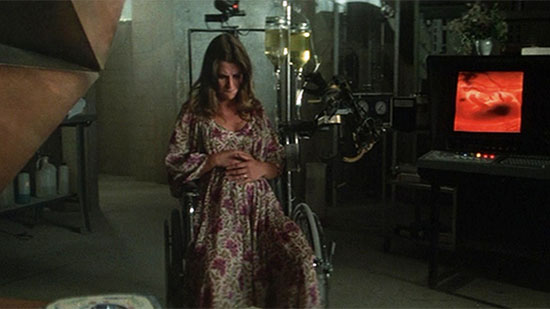
Demon Seed, alongside David Cronenberg’s The Fly, were the two films that kickstarted my lifelong interest in genre cinema. Seeing them both back to back in the depths of Cornwall, in a half-empty cinema on Halloween, was the perfect environment to absorb their shared themes of paranoia, isolation and technologically-driven male arrogance. Two films that made me realise the artistic depth that horror and sci-fi share, whilst pushing on the boundaries of what those genres can do. And despite their resolutions, or lack thereof, they have permeated in my mind an empathy and wariness of what people are hiding behind closed doors. – James Maitre
Dogtooth (2009)
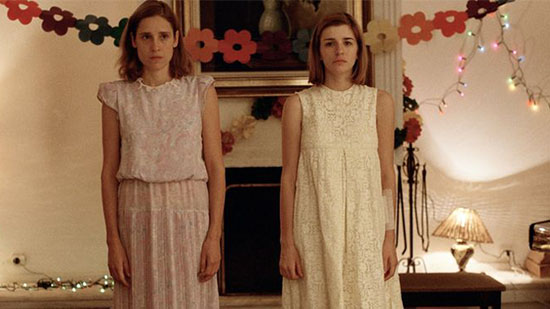
I watched Dogtooth when I was 17 with a girl who I then realised I was madly in love with. We rented it from Blockbusters and I brushed my hand gently over hers in the dark during the incestuous sex scenes. I feel like it shoved me into adulthood and made me realise I wanted more from life than living in a market town and cycling endlessly to the house of a teenager who had a gross, balding 36-year-old boyfriend and would never do more than furtively snog me in the dark. So I moved to London, and became a practicing bisexual. I still love Dogtooth and find it a weirdly sexy film. It’s also great quarantine viewing. – Eve Willis
La Dolce Vita (1960)
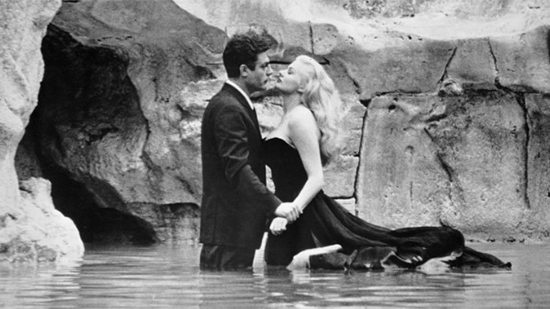
Federico Fellini’s 1960 classic convinced me to leave life in America behind and move to Italy. The wonderment I felt seeing the life I could lead in contrast to the dull life I was leading, the excitement I felt when eventually I was living it, and the forlornness of the final segment that mirrors my own life having come to the end of my Italian adventure, have truly made La Dolce Vita the most impactful (and the most expensive) film I have ever had the pleasure of viewing. – Henry Baime
Ex Machina (2014)
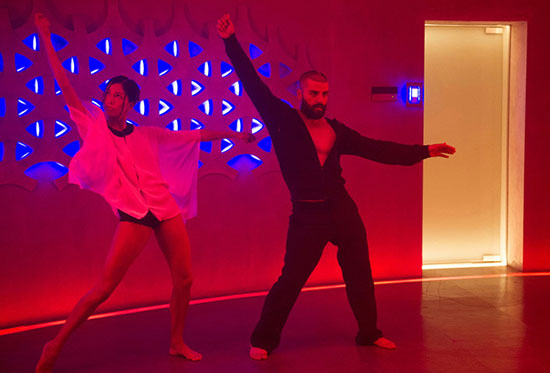
The thought of doing a slow dance at my wedding sent chills down my spine, because the idea of performing in front of a group of people is my nightmare. So it might seem strange that I agreed to my now husband’s alternate suggestion: the iconic dance sequence from Ex Machina. Sure, it doesn’t scream out everlasting love, but it felt like the perfect choice — and not only because it lasts less than a minute. Dance rehearsals in our kitchen watching Oscar Isaac and Sonoya Mizuno on a loop felt like a low-rent Strictly Come Dancing, but we mostly nailed it (with a few adjustments to accommodate my dress). The most nervous I felt that day was just before "Get Down Saturday Night" by Oliver Cheatham started playing, and a sea of our friends and family’s faces were looking back at us. Channeling these Ex Machina performances helped me get over my stage fright and created a first dance moment I’ll never forget. – Emma Fraser
Goodbye First Love (2011)
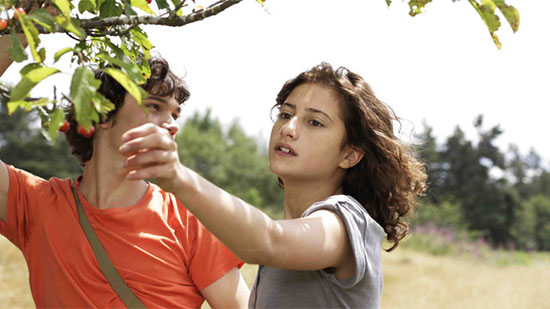
I first saw a film by Mia Hansen-Løve in film philosophy class in 2018, and couldn’t put my finger on the type of pain it inflicted. It was on a spur of the moment decision that I stepped into Goodbye First Love one evening that I realised the films I find most important in life are odes to love. That was a grippingly painful one: love begins, it gets smothered, it persists. In Goodbye First Love I found a younger me that (accidentally) spent a day at the Louisiana Museum of Modern Art and sat on that same grass reflecting on togetherness and solitude. After sharing this film with a significant one in my life, I recognised it had inflicted that same ineffable kind of pain I knew. – Savina Petkova
Goodbye, Dragon Inn (2003)
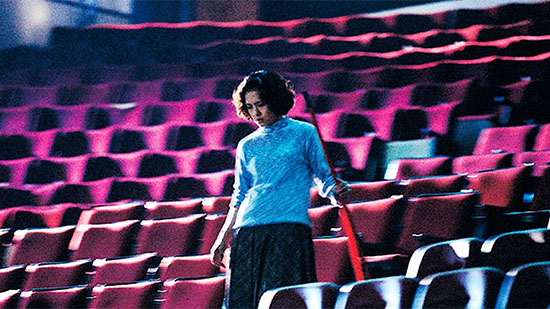
I’ve never subscribed to the belief that the most powerful cultural experiences are those that we have in our late teens and early twenties. The hunt to be moved and sculpted by cinema never dims for me. In the middle of the last decade, my 30s, I was introduced to the work of Taiwanese filmmaker Tsai Ming-Liang through his incredible paean to the power of the movies Goodbye, Dragon Inn. It slowed me down, gave me a new way of seeing, moved me with its nostalgia and humanity, made me yearn for the past and also excited for the future. My love for Tsai’s work burns bright, undimmed, and I had a similarly transcendental, axis-shifting experience watching his latest film Rizi (Days) at the recent Berlinale. – Neil Fox
Goodfellas (1990)
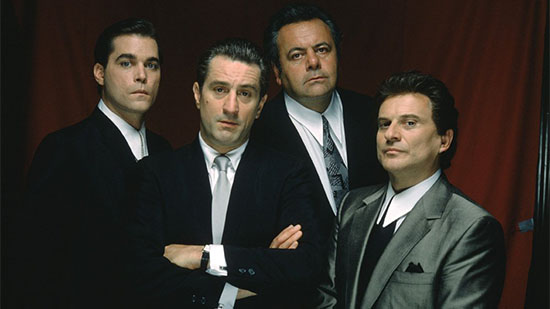
Goodfellas didn’t change the way I look at life, but it did change the way I look at films. It was a cinematic gateway drug, a work of art so entertainingly made that I, in my early teens (years too young, but who waits until they’re 18 to see Goodfellas?), would watch on repeat until, slowly, I became conscious of choices – those made by actors, the editor, the director, whoever was behind that tracking shot or that music cue. TCM, the only movie channel that came free with the TV package when I was growing up, had a comfortingly regular lineup; Goodfellas was one of the films that ran on the channel like clockwork. What else was I going to do as a teenager but keep watching? – Brogan Morris
The Great Beauty (2013)
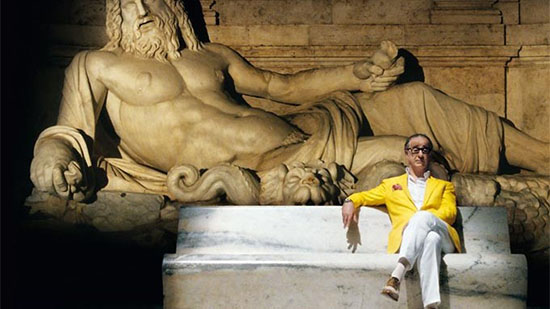
It was nine in the morning at my university’s cinema when I watched The Great Beauty for the first time. As an 18-year-old left speechless by Paolo Sorrentino’s masterpiece, I was totally enamoured. While the image of waves on the ceiling still permeated my dreams, I chose the film to be the subject of my first academic essay. I still look back at that piece of writing with pride, albeit cringing at the state of my vocabulary. It was a film that allowed me to spread my academic wings for the first time and put fingers to keyboard and write in a way that made me truly excited to be studying film. – Emily Maskell
In Bed With Madonna (1991)
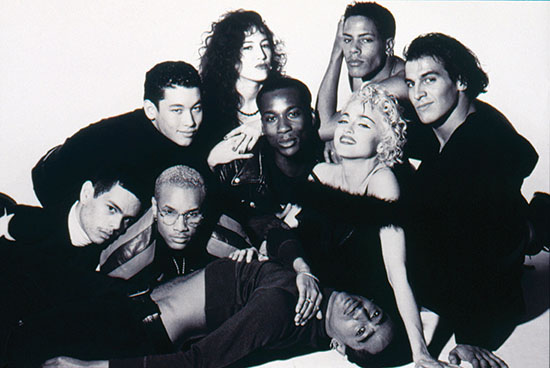
Modern Madonna is all bathtub pontificating and concert disasters, but rewind 30 years ago, she was a pioneer on so many levels. This came together perfectly in the tour documentary In Bed With Madonna. In those days, celebrities never opened up their lives, hence Warren Beatty freaking out when being filmed. The legacy for this movie, which blew my mind, was the unconditional acceptance of her six gay dancers. As a fledgling gay man growing up in rural England, it was a tough time (thank you Mrs Thatcher) so hearing the chant “We’re here, we’re queer, get used to it”, seeing how Madonna interacted so freely with her cast and the ferocious way she defended this when she was heavily criticised in the promo interviews, it made me feel a little less alone and that things were going to be OK. – Chris Park
Inland Empire (2006)
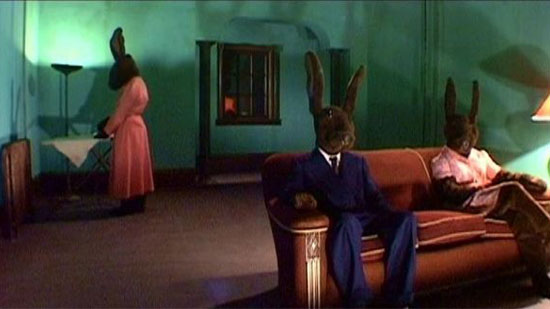
I watched Inland Empire while I was an undergrad in Tucson, Arizona. I watched it with a young woman who I definitely had feelings for, but seemed to be thoroughly trapped in a friend zone with. Inland Empire, to me, is the most terrifying film ever made, a nearly three-hour disorienting jump-scare nightmare. The young woman agreed, and after watching the film, we were closer than before. It was like we had shared some life-changing experience. She spent the night. We only dated for two months, but since then I’ve known that trauma and terror are linked to human compassion and desire. I’m reminded of this being trapped with my fiance in our apartment in New York during the Coronacrisis. Our connection is now more powerful than it ever was. Oddly enough too, we watched the Inland Empire blu-ray a couple of days ago. – Adam Lehrer
Jeanne Dielman, 23 Quai du Commerce, 1080 Bruxelles (1975)

To date, I’ve never seen a movie as impactful as Jeanne Dielman, 23 quai du commerce, 1080 Bruxelles. I first saw it in Tokyo in 2015, crammed into the tiny apartment I’d moved into to start a yearlong placement as a teacher. All I knew was that it was nearly four hours long and consisted mainly of protagonist Jeanne doing household chores. Bizarrely, I was riveted. Maybe it was the fact I was doing a job where every day felt very similar to the one before it, the repetition of daily routine felt profoundly relatable. Whatever it was, I felt different about everything afterwards. It’s definitely made me reflect on the perilous nature routine can have. Jeanne’s downfall is that her routine is inescapable – so ever since, if I’ve found myself doing the same thing every day and there’s a way out, I’ve made sure to take it. – James Morton
Kids (1995)
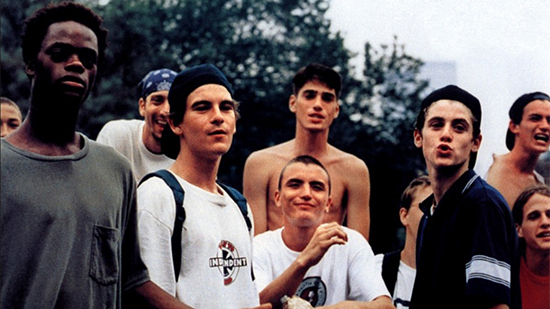
Larry Clark’s Kids had a huge, even formative, impact on my life as it gave me a rare (and quite reliable) insight into the everyday life of American teenagers we used to look upon in the hectic days of post-transformative Poland during the 90s. We, the kids of Warsaw’s council estates and freshly imported MTV, didn’t bother much about the issue of HIV that the film touched on, but were completely blinded by the view of skateboards that we saw as a means of transportation that could carry us straight into the mythical West.
I use plural here consciously, as my memories of that time and film are almost identical as those of a significant part of my generation – the kids born in the 70s and 80s, that went on to become the first generations of Polish skateboard community and also the local rap scene that was taking its shape at that time, and was inseparably connected to the skate world. The same kids who gathered money for months to get their first decks, wrote rhymes about Clark’s debut film for their future releases, and met all together when the Zoo York crew – with the sorely missed Harold Hunter still on board – came to Warsaw at the brink of the millennium. – Filip Kalinowski
Kill List (2011)
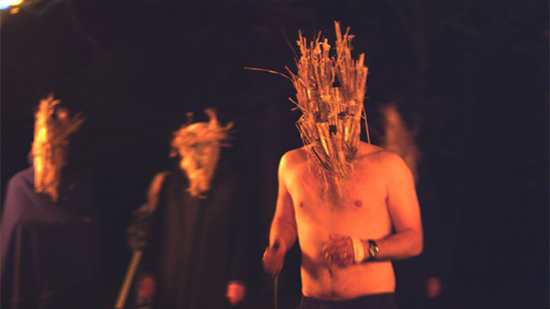
Kill List was life-changing to me in that I can no longer expect a cut-to-black in fear of an unforeseen explosion of a skull. With hammer blows to the head this eye-rubbingly realistic, the shock hits before the inevitable wince at the violent leftovers. After coming out of the cinema wondering if the actor was still alive, I was forced to look into the technical aspects of such a stunt and, in doing so, have maybe ruined the shocking magic that extreme, realist violence in cinema has on me. Several interviews with Ben Wheatley and a few DVD extras later and I’ve not reacted to visceral onscreen violence with the same instantaneous bout of sweats since. – Harry Jones
Rocky Balboa (2006)
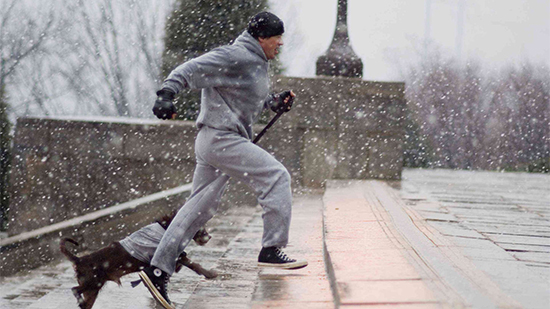
After I had my liver transplanted, I wasn’t sure how to literally and figuratively get moving again. That was until Sylvester Stallone’s titular character said, "It ain’t about how hard you hit, it’s about how hard you can get hit and keep moving forward". That made me find the strength to carry on. – Bill Bria
Say Anything… (1989)
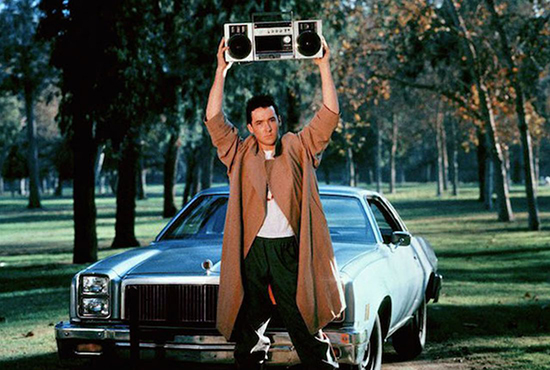
John Cusack’s Lloyd Dobbler is the hero of Say Anything…, but maybe "hero" is too strong a word for someone who’s just trying to get through life without being miserable. Awkwardly sporting a fresh Economics degree, it was Lloyd who made me realise that maybe it’s OK to not become an investment banker or a software developer. "I don’t want to sell anything, buy anything, or process anything as a career. I don’t want to sell anything bought or processed, or buy anything sold or processed, or process anything sold, bought, or processed, or repair anything sold, bought, or processed. You know, as a career, I don’t want to do that." Amen. – Thomas H. Sheriff
Streets Of Fire (1984)
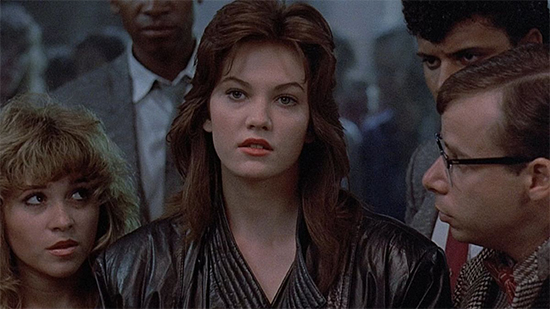
Despite its many (many, many) flaws, Walter Hill’s Streets Of Fire introduced me to a complex vision of womanhood in the form of Amy Madigan’s McCoy, who seemed to suggest that it was perfectly legit as a woman to punch barmen who think you might have had enough to drink, and to turn down local bad boys who bed women almost out of a weird kind of courtesy. This caused a few misunderstandings at high school… – Cazz Blase
Threads (1984)
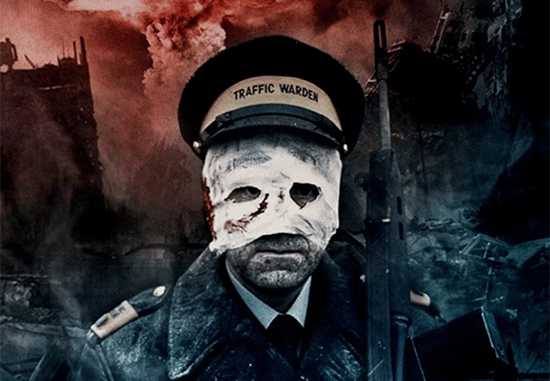
It is September 23, 1984. I am 13 years old. I am sitting in the small bedroom of the semi in the outskirts of St Helens where I live and everything is right with the world. I am reading The Hitchhiker’s Guide To The Galaxy by Douglas Adams and listening to The Luxury Gap by Heaven 17 on my Dansette. I love sci-fi and I love music from Sheffield – especially by ABC, The Human League, Heaven 17 and Cabaret Voltaire. My Dad shouts up from the bottom of the stairs: “Come down here. There’s something on TV I think you should watch. It’s called Threads.” The next day I tearfully join CND. By the end of the week, I am a vibrating nexus of anxiety and I constantly check the horizon for mushroom clouds. I have finally caught up with the 80s. – John Doran
Tim & Eric’s Billion Dollar Movie (2012)
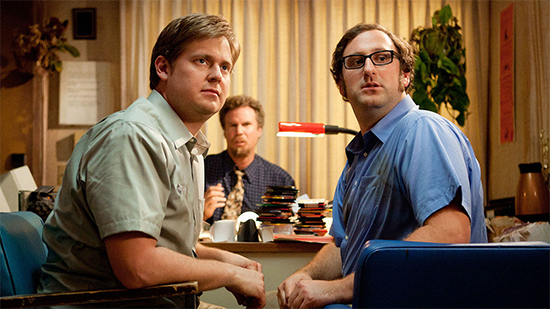
When I watched Tim & Eric’s Billion Dollar Movie for the first time (and all of the Tim & Eric comedy backlog, to be honest), comedy suddenly felt accessible to me. While I had always been preoccupied with the desire to make people laugh, the way I perceived comedy was drastically altered. Growing up seeing comedy done in only so many different ways – stuff my parents would show me, which shaped the comedy I consumed as an adolescent and teen, and which I’d try and fail to mimic– I never knew people could be funny like this, and that it was something people actually wanted. Not only did this kind of comedy exist, but it had an audience. People wanted weird shit, and people performed weird shit. Suddenly, comedy, which had always felt out of my grasp, seemed like something I could do, too. – Brianna Zigler
Whiplash (2014)
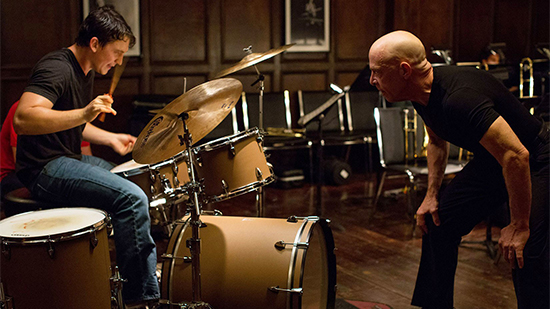
When I first saw Damien Chazelle’s Whiplash, I was in a zero-hour contract, preparing for my A-Levels, with no idea what to do next. The film had such a powerful effect on me that I quit my job that same day. At the time I wanted to be an actor, and Andrew Neiman’s dangerous passion to become the world’s greatest jazz drummer felt akin to my own ambitions. His dedication to the craft and the music school he attended was something I aspired to, so that evening I applied to five drama schools. I did that for the next three years whilst I worked in various theatre productions and attended countless auditions. Though I look back now and recognise the character’s toxic behaviours, and my career has since taken a different direction, I still look to Whiplash whenever I need reminding to work hard if you really really want something. – Millicent Thomas
The Wicker Man (1973)
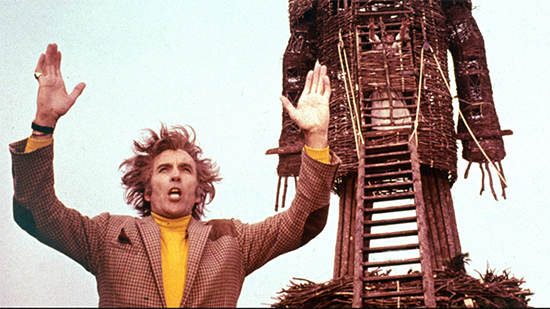
The Wicker Man changed my life in the sense that it has planned out my May Day for every year since I first saw it – I have to watch it on May Day each year. It’s become one of my few superstitions in life, perhaps driven by the superstitious nature of the film itself, with its Summerisle harvest. I wouldn’t want to risk not watching it… – Matthew Barton
Withnail & I (1987)
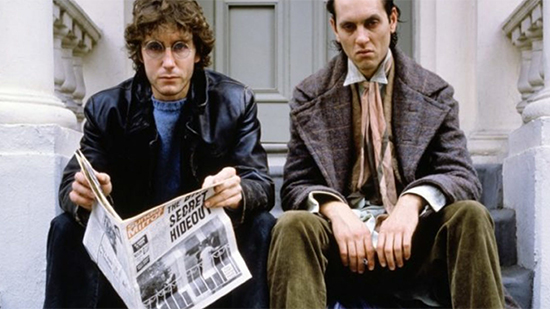
All teenagers in the 90s grew up under the myth that the 1960s had been the peak of human cultural achievement and that we’d been in decline ever since. I dutifully swallowed the received wisdom, and would troupe to the town Our Price to buy records by The Beatles, Stones, Doors and Byrds. Yet none of them connected. It was via a friend’s older brother’s pirated VHS that I first saw Withnail & I, a film that said more about the 60s than any hagiography I’d encountered in the media or in books. It was, as Danny the drug dealer put it, the decade that had so much potential, "but we have failed to paint it black". But exploding the myth of the 60s in an attack on nostalgia that I think now enables me to always see the present in a clearer, more positive light, Withnail had so many more life-changing qualities. It is a curiously all-male film – the only women are one-dimensional shouting farmers or tea shop attendants.
This though I think is the point – Withnail is an exploration of how intense male friendship can be, often to the point of homoeroticism, and how words unspoken cause destruction. It’s also a film about the foolhardy assumptions of escape to the countryside from the urban, an early counterblast to the nature cure. It too is a warning about addiction, no matter how many bellends ended up trying to ruin the film with their Withnail drinking game. Withnail is a comment on English decline and failure, a subject that ever since has been a personal obsession. It’s also a lesson in the joy of the English language – never before or since has the word ‘sherry’ repeated five times sounded so poetic. And, in a more superficial way, it’s just so monstrously suave, from the script to Withnail’s jacket, to one of my favourite cinema shots of all time – the moment when Withnail and Marwood leave London in a battered Mk II Jag, the latter at the wheel, flicking down his shades, fag in mouth, as a wrecking ball swings against a terrace in the background. – Luke Turner
A Woman Under the Influence (1974)
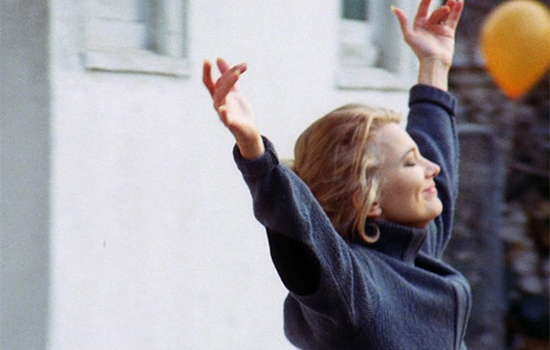
My parents have been happily married for almost 25 years, except for the five or six times they told me they were going to get divorced. They didn’t, but every few years I’d brace myself for the same couple of weeks or months: silence, snipping, shouting, crying, silence, running away, silence, back to normal. I’d brush it off, and side with whichever parent was being nicest to me because I was a selfish and scared teenager. We were shown A Woman Under the Influence in a film studies class at university. I think at this point, my parents hadn’t almost-divorced in four years – two more instances would soon be on the way.
But something clicked when I saw Gena Rowlands painstakingly reclaim control of herself and her family onscreen – in a film directed by her husband, John Cassavetes, in which the problem is her mental instability. She was trying so hard even though no one respected her. She loved everyone and everything so much even when she didn’t know how. It’s made me feel worlds closer to my mum ever since, on nothing days and on almost-world-ending days. I don’t think I could ever tell her this. – Ella Kemp
If you enjoyed this feature and are currently OK for money, we have a favour to ask you – if you could consider sparing us the price of a pint or a couple of cups of fancy coffee. A rise in donations is the only way tQ will survive the current pandemic. Thanks for reading, and best wishes to you and yours.

